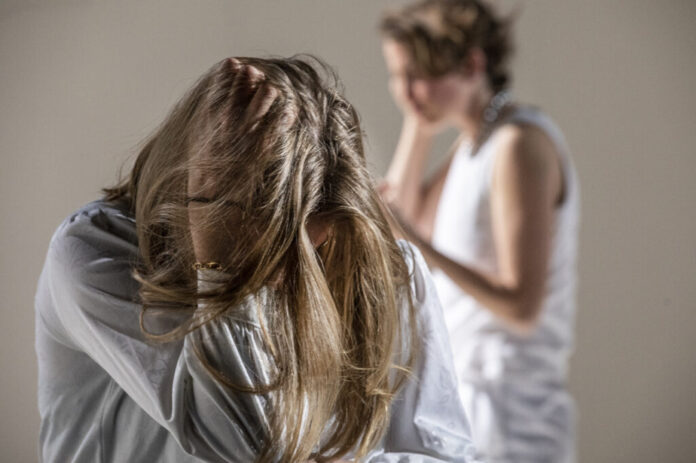Adapted from a short text from his youth by the writer Robert Walser, The Pond, by Gisèle Vienne, is a theatrical proposal that is subversive, disturbing, even unbearable… But perfectly mastered.
The scene opens with a messy teenage bedroom, with a small bed and seven large puppets strewn on the floor. A stage technician arrives. He pulls each doll off the board, one at a time, to loud techno music! Then leaves all the room to the two actresses. They advance on the stage at a very slow pace, with gestures in slow motion, deconstructed, like a strange pantomime.
Adapted from a short text from his youth by the Swiss writer Robert Walser, L’étang by the French designer Gisèle Vienne (Jerk, The Ventriloquists Convention) is a theatrical proposal that is subversive, uncomfortable, at times unbearable… But perfectly mastered.
We are somewhere between dream and nightmare, in Fritz’s tormented brain. A teenager in crisis who plans, during a party at his house, a fake suicide by drowning in a pond. The play exposes the excesses of a dysfunctional family, a story marked by violence, incest, lack of love. “You don’t choose your family, but how you get rid of them,” Fritz will launch into the chaos.
Adèle Haenel plays all the teenage characters, modifying her modulated voice on the mic. His lines mingle with the ubiquitous soundscape, created by Adrien Michel, who did an outstanding job! We hear the actress breathing, sniffling, screaming… She slaps her face, chokes, writhes in pain. His suffering is palpable to the back of the room: “I just want it to stop,” says the young Fritz, to free himself from his pain in living.
The talented actress, among others awarded for the film Portrait of the young girl on fire, delivers here an amazing number of actress! His game is very physical, on the verge of a nervous breakdown, on the tightrope. At his side, Henrietta Wallberg is a strong, icy, enigmatic presence. She interprets the father and the mother with an assumed authority in her slightest movements. On the set, the contrast between these two actresses, one with blonde and abundant hair, the other who displays a tomboy look, with her cap and her sneakers, is perfectly assumed. The two performers are in unison in this twilight ballet, beautifully lit by the lights of Yves Godin.
We find in this show both a political gesture – a critique of patriarchy, social roles, among others – and a new scenic language. It is an uncompromising, unique production, driven by true creative freedom.
After the performance, during a meeting with the public and the artists, a spectator spoke up to say that he was “bothered” by the piece, to the point of not knowing whether he liked it or not… Gisèle Vienne replied that she does theater to destabilize people; to try to transform our “perception of the field of art”. Thanking him for his comment, she added, “Not wanting to be disturbed [by a work] is also not wanting to think. »
An informed spectator is worth two.















